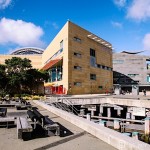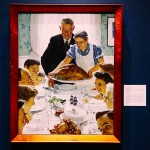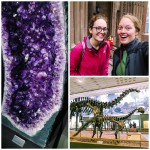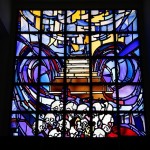Back in June I finally visited The Cloisters museum in Fort Tryon Park of Upper Manhattan. It’s a branch of the Met dedicated to the art, architecture, and gardens of medieval Europe. It’s been on my list to check out for years, but since my NYC priority is always theater, I rarely have a chance to see museums in the city. Fortunately this visit coordinated nicely with wrapping up my gig on Showtime at the Apollo and I spent the morning here before catching a train home to CT.
So what is a cloister? It’s a covered walk in a convent or monastery, typically with a wall on one side and an open quad or garden on the other. The Cloisters museum is a sprawling structure featuring many of these walkways and gardens.
The closest subway stop to The Cloisters is 190th St. near the entrance of Fort Tryon Park. This whole area is quite lovely.

View of George Washington Bridge from the park:

Meandering through the park for the final blocks:


I entered The Cloisters closer to that tower, but here is the main official entrance:


Here’s where I entered. It was on a weekday so there were school groups running around during my visit, but I looped back on my way out to get shots without people in them:



While I’m not typically into medieval studies, it didn’t matter — this whole museum felt special, like a secret getaway from the busy city. Minus the school kids occasionally running around, it was very quiet and serene.

Perhaps the museum’s most famous room is where the unicorn tapestries are displayed — there are seven tapestries in total (woven in Belgium around 1500) that depict the story of “The Hunt of the Unicorn,” a Christian allegory.



This is the Gothic chapel:


An employee was actively working on restoring this statue as I entered the room (see two photos above). What a neat job.

The Glass Gallery:

Courtyard and cafe:

The Bonnefont Cloister and gardens — lots of neat plants and flowers here:




Dried flowers inside this room off of the garden:

Stained glass:

The Pontaut Chapter House, an abbey from Bordeaux built in 1115 and recreated here (I believe with the original stone work):

The Saint-Guilem Cloister:


Exterior of the Langon Chapel:

The Fuentiduena Chapel, made of more than 3,000 blocks of limestone sent over from the Spanish government in 1957, to form a twelfth-century apse:

A closer look at this impressive chapel:

Approaching the courtyard for the most iconic cloister on the property:

And there she is! The Cuxa Cloister:


I spent awhile just sitting here on the edge of the garden. What a peaceful spot.
Can’t believe it took me this long to visit! Very worthwhile to spend a few hours here.





